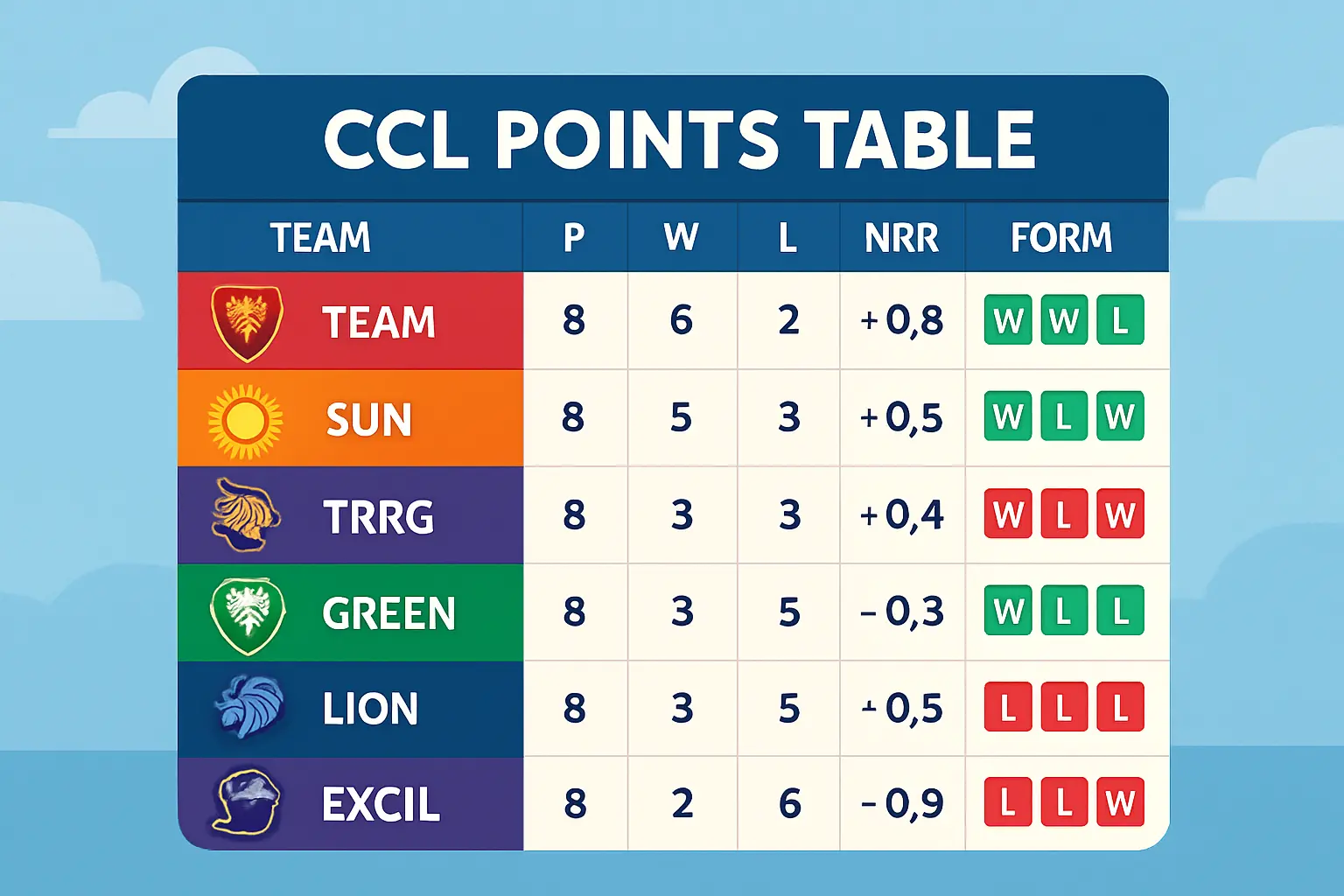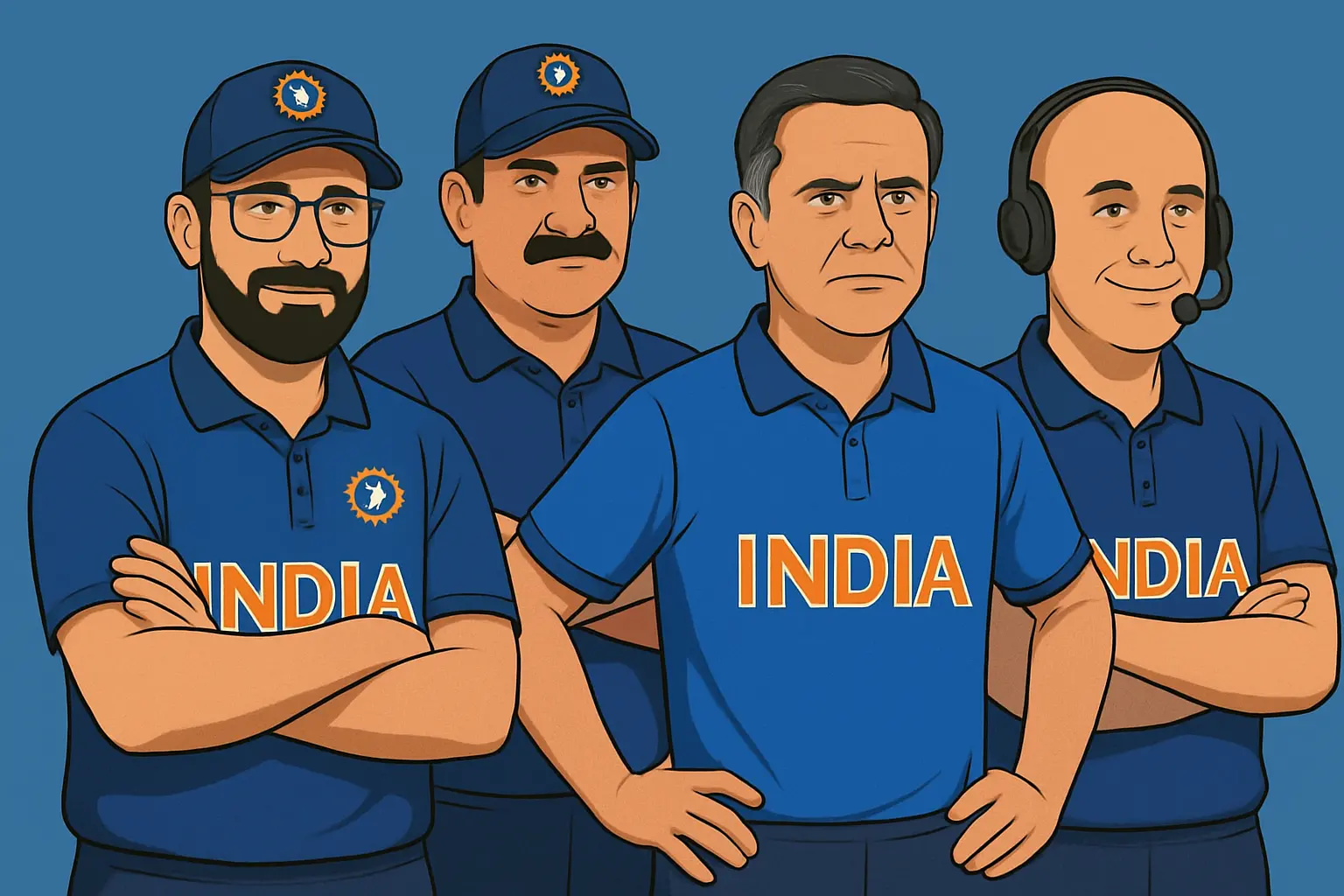The hush before a spinner lets go is different to any other quiet in cricket. It’s not the pause before a thunderclap, but the inhale before a magic trick. A ball hangs, seams tilt, shadows take shape in the batter’s mind, feet twitch, and while the stadium follows the arc, a plan many overs in the making completes itself. Spin bowling is chess at fast-forward speed: geometry, psychology, and physics folded into a six-stitch circle that can tilt a five-day story in a single loop of drift and bite.
I have walked out on cracked afternoon surfaces where dust twitches at a bowler’s whisper. I’ve stood at short leg behind reinforced shin-pads as a top-spinner climbs off nothing and the bat sounds different—harder, hollower—just before the glove flicks and the trap closes. I’ve watched hundreds of spells in heat and wind and under cloud, and the best spinners don’t merely turn the ball; they rearrange a batter’s reality. They edit options. They make time feel heavier.
This is not a spreadsheet ranking. It’s a field-side list informed by long days in press boxes and longer evenings beside nets, by conversations with keepers who read wrists, coaches who grade seam axes with their eyes, and batters who learned the hard way that some rotations can’t be negotiated. The “best spinner in the world” is more than a tally; it’s a combination of craft, courage, creativity, and the ability to win matches in the moment when everyone expects the seamers to dominate.
What follows is my definitive top ten: a hierarchy that blends legacy, skill, adaptability across conditions, and match-winning muscle memory. Then, beyond the names, I’ll take you inside the craft—why certain angles work, why fielders matter as much as revolutions per minute, and why a single adjustment in wrist position can change a series.
How this ranking was built
- The only filter that truly matters is match-winning impact against top opposition across conditions. Everything else feeds that.
- Formats matter, but Test-level control and deception remain the bedrock of greatness. Short-format excellence adds to the case.
- Innovation, adaptability, and the ability to create wickets when the surface offers little count heavily.
- Longevity is respected, but peak menace—the ability to bend a contest at will—can outweigh raw duration.
Top 10 best spinner in the world
-
Muttiah Muralitharan — the mercurial engineer
Murali’s bowling wasn’t merely unique because of his action; it was unique because of the layers of thought stitched into each over. You could sit behind the arm for a whole afternoon and never see the same ball twice in the way it reached the batter. Spin bowling has three primary currencies—drift, dip, and bite—and Murali trafficked in all three with a richness no one else matched. His off-break wasn’t a simple right-to-left shape; it arrived looking like a wide looper before it corkscrewed late, brushing past bat and pad. Then the doosra threaded the eye of that needle, starting wider and cutting back in, a nightmare for the outer half of the bat.
He was also a master of tempo and seam axis. Murali’s scrambled-seam ball could ride the wind, hang longer in the air, then dip more violently; the same grip, held a fraction tighter, would reduce overspin and add skid through the pitch. Watch the close fielder cordon when he bowled: almost choreographed. Backward short leg on a half step, leg slip creeping when the ball was new, silly point alive for the inside edge as the pitch aged. He hunted in packs—bowler, keeper, and three vultures circling the straight bat.
His greatest magic trick was extracting bite from lifeless surfaces. He would bowl into the leather of the ball, produce revolutions far beyond the average spinner, and generate bounce from a length that should have given nothing. On friendly turf, he was a landslide; on neutral turf, he manufactured weather.
What elevates him above all is how repeatable the miracle was. Marathon spells built on micro-variations, tiny wrist angles that only the batter and the slip cordon would spot too late. The wicket tallies tell one story. The feeling in a dressing room—opposition batters silenced, waiting for the inevitable—tells the deeper one. That anticipation is greatness.
-
Shane Warne — theatre, strategy, and the art of leg-spin
Nobody in the spin bowling pantheon understood the stage like Warne. His genius lived at the edges of the ball and inside the batter’s brain. A Warne over began long before he marked his run-up. He’d move a fielder, pause to tighten his fingers around the seam, and sell you a story: float, loop, drift through the breeze that always seemed to arrive on cue. Then the leg-break would arc into a corridor of indecision: too full to go back, too short to drive confidently, always just outside the line of perfect footwork.
Every spinner talks about plans; Warne drew maps. He crafted dismissals over sessions, spoon-feeding safe singles when the trap needed bait, then dragging length and line to a precise spot. When the googly or flipper arrived, it arrived as a culmination, not a surprise element. He could turn you on a trampoline, sure, but he more often beat you with hands and imagination—drift that overpulled the front foot or a top-spinner that reared from nowhere.
Even the famous Gatting ball—spun from outside leg to clip the top of off—was more than an outrageous leg-break. It was the culmination of drift and trajectory: losing height as it drifted in, then biting into rough to straighten sharply. He used breeze like an ally and fielders as co-conspirators. Fetching change-ups out of a pocket of dust, he didn’t just bowl overs; he constructed scenes.
It is easy to romanticize Warne the showman and forget Warne the technician. He held an upright seam when he wanted drift; he bled side-spin into overspin for drop; he could pull back his pace with no change in arm speed. Most batters lost before contact. A few claimed they didn’t fear him; then a zooter slid on and clipped the front pad and the debate evaporated. Warne carried wrist-spin through eras where finger spin ruled line-and-length. He made leg-spin an inevitability again.
-
Anil Kumble — relentlessness with an engineer’s mind
There’s a particular sound when an overspinning ball kisses the splice. Kumble generated that sound at will. While others fed the myth that spin means extravagant sideways turn, Kumble weaponized drop and bounce. He drove through the crease, used steep seam angles to hit the top of off, and made batters play at everything. His leg-break didn’t scream sideways; it pushed past the bat with pace off the deck, and his top-spinner was a truth serum—a ball you thought you understood until it ballooned.
The essence of Kumble’s greatness wasn’t mystery; it was pressure that calcified. He would hammer a corridor, pace the over briskly, and squeeze batters into low-percentage shots. The line to left-handers from round the wicket, the out-of-nowhere flipper at stump height, the run-in from wide of the crease that produced tiny angles to leg slip—every adjustment was incremental and intelligent.
Many remember the ten-for in Delhi as a spectacle of destiny. In truth, it was pure process: back-of-a-length, forcing indecision, drawing mishits on a surface with no patience for half-commits. Kumble could be miserly in one-day cricket and ruthless across formats. He didn’t need the pitch to crumble; he needed just a fraction of uncertainty. He found it repeatedly, everywhere, with a fighter’s heart wrapped in a scientist’s methodology.
-
Ravichandran Ashwin — the professor with laboratory hands
Some spinners perfect one stock ball and build illusions around it. Ashwin wandered into a lab and emerged with an entire language. His carrom ball arrives with no obvious cue; the index and middle fingers flick in a way that adds late undercut on release. He’ll widen the crease by a boot length and change the trajectory by a meter without touching his speed. To a left-hander, he’ll bowl from over the wicket into the angle, then step wider and release earlier to turn the ball past the outside edge from the same middle-stump line. It’s not variety for its own sake; it’s cause-and-effect.
The most telling feature of Ashwin’s bowling is how often the slips and bat-pad fielder are surprised by what arrives at them. That speaks to how late his ball behaves. Even on flat pitches, Ashwin builds action through micro-variations—incremental changes in revs and seam tilt—to produce that last half-meter of bite. He understands hand positions better than almost anyone, and he reads batters mid-over, adjusting line and angle to their backlift and back foot’s reluctance.
Off-spinners lived in the shadow of DRS scrutiny and the death of rough for a while, but Ashwin turned both into opportunities. He traps on the inside edge with overspin; he gets lbw from a ball that looks to be missing until it dips late. On turning tracks, he is a torrent. Away from home, he has learned to bowl tighter and fuller, to let drift and top-spin coax errors. When Ashwin has the ball, a batting order feels like a puzzle he is enjoying too much to solve too quickly.
-
Nathan Lyon — overspin, patience, inevitability
Lyon feels like a lesson in the essence of finger spin. He doesn’t clutter the experience with a dozen tricks. He bowls hard overspin, an upright seam, and a heavy ball that lands where it should with relentless precision. His best deliveries dip as they cross the batter’s eyeline and bounce steeper than expected. Wickets arrive at short leg after the inside edge balloons, or at slip as the ball bites, straightens, and plays with the outside half.
Early in his journey, Asian pitches were puzzles; later he became fluent—wider on the crease, slower through the air when needed, and craftier with their rough. In helpful home conditions, he has been a machine. To left-handers, he has created a unique prison: the ball starting on middle, challenging leg, then climbing to the edge of off. Even when he goes a session without success, it feels like he is only stacking wood for a bonfire later.
Lyon’s best spells are often about the last two balls of an over—after a set of three or four that land within a saucer, he pulls back the length or holds the ball back, and the batter’s muscle memory betrays them. It takes discipline to keep doing the simple things at a world-class level for so long. Only those with perfect basics can make Test cricket look so predictable.
-
Rangana Herath — the left-arm librarian of pain
Left-arm orthodox bowling is a language with its own grammar. Herath spoke it with sparse, beautiful sentences. He didn’t need to talk loudly. He set you up with straights, beat you with angles, and made the ball sneak through with pace. His drift into the pads to right-handers, combined with slight overspin that made the ball hold its line, produced lbw after lbw, even on days when you would swear there was nothing in the pitch.
Herath’s control over release and trajectory framed his game. He had the freedom to bowl from wide of the crease and still hit top of off. He made batters play in front of the pad instead of beside it, a small detail that changed dismissal types dramatically. That low, skiddy pace through the air—especially on surfaces that took gradual wear—meant a batter could be set up for several overs without realizing it. He was at his most vicious when a pitch began to powder; he could pick you off one by one without ever seeming rushed.
There’s also the matter of temperament. Herath was calm when others were frantic. He let time work for him. He understood that spin isn’t about fireworks every ball. It’s about moving the scene an inch at a time until the only place left to stand is on a landmine.
-
Saqlain Mushtaq — the architect of the doosra age
Before Saqlain, an off-spinner’s threat moved mostly left-to-right for the right-hander, with top-spin for bounce. Then he invented a ball that changed the geometry of a field. The doosra broke right-to-left at genuine off-spinner pace, with an action that looked identical to the stock ball. Saqlain didn’t simply add a trick; he added a phase of play. You could no longer judge line on release alone; you had to commit early and pray your read was right.
Saqlain’s ODI overs were masterclasses in control under pressure. He bowled the death with a spinner’s brain, changing pace within a narrow bandwidth, never betraying a change-up with a tell. His test-match value went underrated at times because his white-ball aura was blinding, but long spells revealed the broader toolkit: a beautiful, heavy off-break, a top-spinner that bit, and an understanding of fields that was a decade ahead.
The best batters were forced to redraw risk maps against him. The mid-wicket gap closed because the doosra brought pad and stumps into play. The cut took a back seat because the line about shoulder height could be the stock ball or the one that came in. Coaches tell juniors to watch the hand; Saqlain made even elite eyes blink.
-
Abdul Qadir — the man who kept wrist-spin glowing
Wrist-spin would have gone quiet for a generation without Qadir. He bowled with a flourish—knees high in the gather, a curving approach, a wrist like a whip—yet what made him lethal was how early he understood that leg-spin need not be wild. He bowled at a brisk tempo, landed in the right postcode ball after ball, and let drift and subtlety choose between stumps and slip.
There were leg-breaks that ripped and leg-breaks that didn’t; top-spinners that cut a batter’s thought in half; and googlies that seemed to wait a heartbeat before biting back in. He liked to name deliveries, and while some of that was theatre, it was also truth: he gave his variations identities so he could deploy them in character. That freed him to be bold under pressure. He would toss one up to the greats, get hit, smile, then drag the next one a fraction shorter and watch it grip on off. Lessons were often taught in back-to-back balls.
Qadir’s influence radiates through those he inspired and mentored. If leg-spin is a river, he was one of the stones that changed its course, forcing the water to sing a different tune.
-
Rashid Khan — the T20 era’s wrong’un with Test-match heart
Some wrist-spinners are poets; Rashid is a quick-tongued novelist. The wrong’un is his stock ball, and it arrives at a pace that refuses negotiations. He can hit a sixpence, stump-to-stump, at a speed that makes footwork feel like a bad idea. His leg-break is more subtle, thrown in like an aside, and his slider skids with such late decision that batters swing across invisible angles. He is a product of hyper-competitive short formats, but his brain is old-school: bowl your best ball repeatedly with such precision that a batter must make a mistake to survive.
Rashid’s best spells in leagues and internationals aren’t about mystery; they are about refusal. He refuses the boundary option. He refuses tempo. He refuses to bowl where you are strong. Middle-overs dominance is his art: two wickets for very few, pressure that turns a chase into a crawl. What makes him truly great is how his skills transfer to longer spells; the control, the refusal to bowl freebies, the unshowy patience, all travel well.
Facing him, batters think they’ve read it until the wrong’un grabs just a touch more, or the leg-break doesn’t, and the internal metronome thuds out of rhythm. Keepers love standing up to him because the game speeds up and shrinks; the pitch feels two meters shorter, and every ball attacks something essential.
-
Jim Laker — the old gold standard of off-spin
Laker is more than the number that people like to recite. Yes, nineteen wickets in a Test is a landmark that reads like fiction. But the deeper story is in his method: tight overs, unrelenting line, an ability to read how his off-break would degrade a batter’s patience. On helpful pitches, he was a metronome with bite; on neutral surfaces, he turned the square by the inch. Overspun off-breaks produced bat-pad catches repeatedly. He asked batters to play down the wrong line and made that invitation look irresistible.
He bowled with rhythm more than tricks. No carrom ball, no doosra, just a pure off-spinner’s toolkit: robust off-break, sneaky tops, subtle changes in pace. He read batters’ triggers and moved the ball late enough to make first contact happen with the wrong part of the bat. The greats from later eras tip their hats because Laker’s template is the one so many followed: don’t overcomplicate, out-think slowly, and insist on your corridor until the opposition walks into it.
Honorable mentions that deserve your applause
- Graeme Swann — a master of drop and drift in seaming conditions, superb to left-handers from around the wicket.
- Bishan Singh Bedi — artistry and flight from the left-arm school, a mentor spirit as important as his spells.
- Derek Underwood — cutter-like slow bowling with lethal accuracy on damp or drying surfaces.
- Harbhajan Singh — a fierce off-spinner with a fighting heart and a top-spinner that thudded through bats.
- Daniel Vettori — economy as pressure, angles as weapons, a leader’s cool in tight games.
- Yasir Shah — whirlwinds of leg-spin capable of tearing a Test open across a session.
- Ravindra Jadeja — left-arm precision and pace through the air with relentless accuracy and an unfair arm ball.
A quick reference: spin types, signatures, and defining edges
| Name | Spin type | Signature deliveries | Defining edge | Where they strangled games |
|---|---|---|---|---|
| Muttiah Muralitharan | Right-arm off-spin | Off-break with enormous revs, doosra, top-spinner | Late dip and bite off any surface | Fourth-innings defenses and long holding spells that became sieges |
| Shane Warne | Right-arm leg-spin | Big leg-break, zooter/slider, flipper | Drift plus precise drop; plans layered over sessions | Ashes-like theatre; middle-order disassemblies with men around the bat |
| Anil Kumble | Right-arm leg-spin (overspin heavy) | Top-spinner, flipper, skidder | Bounce off a length; suffocating tempo | Flat pitches where pace of deck became ally |
| Ravichandran Ashwin | Right-arm off-spin | Carrom ball, top-spinner, undercutter | Release-point craft; angles and speed control | Left-hand-heavy lineups on dry and dusty surfaces |
| Nathan Lyon | Right-arm off-spin | Heavy overspin off-break, top-spinner | Upright seam, steep bounce | Home conditions with deep catching cordons; later excellence in Asia |
| Rangana Herath | Left-arm orthodox | Quick straight-on, dipper, arm ball | Drift into pads and straighten; denial of width | Crumbling pitches and low, skiddy tracks |
| Saqlain Mushtaq | Right-arm off-spin | Doosra, off-break at pace, top-spinner | Two-ball illusion from identical action | Limited-overs pressure overs and Test match choke points |
| Abdul Qadir | Right-arm leg-spin | Leg-break, googly, top-spinner | Brisk pace, brave flight, fearless change-ups | Middle sessions where judgment eroded, even on neutral surfaces |
| Rashid Khan | Right-arm leg-spin | Wrong’un as stock, fast leg-break, skidder | Relentless accuracy at pace; stump-to-stump | Middle overs in white-ball cricket; short-format crunch moments |
| Jim Laker | Right-arm off-spin | Heavy off-break, tops | Method and length; classic bat-pad traps | Worn surfaces where patience decided everything |
What really makes the best spinner in the world
- Drift is the real sorcery. Pure spin moves the ball sideways off the pitch. Drift moves it in the air, subtly changing where the batter thinks the ball will land. Warne’s masterpieces began with drift. Murali’s would shift in the wind as if pulled by string. Herath drifted into pads and straightened late. Drift forces fatal misjudgment before the bounce even matters.
- Dip breaks footwork. If the ball drops faster than anticipated, the batter plays too early or on the wrong length. Kumble’s overspin-heavy ball did this with bounce. Lyon’s upright seam made balls drop into awkward heights. Dip is often invisible on TV; you feel it in the hush of a dressing room watching a replay that doesn’t explain a dismissal.
- Overspin versus sidespin decides bounce and turn ratios. Overspin lifts; sidespin turns. Greats combine both. Ashwin blends them mid-over. Saqlain used top-spin to set the doosra; Qadir disguised googly with a touch more overspin to keep batsmen playing straighter.
- Seam axis matters. Scrambled seam creates unpredictable grip variations; upright seam enhances drift and dip. Murali altered seam axis ball-to-ball by feel. Lyon’s upright seam is his calling card.
- Crease use is chess. Over versus around. Wide versus close. Ashwin lives here, manufacturing angles that make a batter’s shoulder align with the wrong line. Herath would step few inches wider and make leg-before inevitable.
The old myths that got broken
- You must always give it air. No. Qadir and Rashid proved pace through the air at stump lines can be more dangerous than pure loop.
- One big turning ball wins you the spell. False. Lyon and Kumble showed the bigger monsters exist in repetition. The wicket ball is often only slightly different; the set-up makes it feel huge.
- Flat pitches kill spin. The best spinners invent their own conditions. Murali and Ashwin have produced collapses on tracks where seamers shrugged. Field placements, angles, and tempo create pressure that pitches alone cannot.
Field-setting as a co-author of wickets
Even the greatest spinner needs a cast. Watch how slip and leg slip breathe with the spell. When Ashwin is working on a left-hander, a deepish leg slip will often be posted early, then brought closer as the inside edge becomes more probable. Lyon builds a wall of catchers on the off side when bounce is starting to show—a second slip, a short cover—inviting the punch that will feather the edge. Warne would push a man out to deep mid-wicket for the bait, then, two balls later, he’d pull him closer, and the batter’s muscle memory would drag a lofted swipe into a waiting pair of hands.
The best spinners use the field not only to catch, but to function as psychological scaffolding. Leave a gap, invite a single, then float it wider. Or stack the leg side and bowl wider of off to drag a slog-sweep across a wide arc. Swann, in his pomp, taught a generation of captains to think in shapes, not dots: cones of risk, funnels of temptation, impenetrable grids where safe contact still leads to chaos.
Spin bowling across formats
- Tests: The long game favors the spinner’s evolving plot—the subtle change in seam position after lunch, the widened crease late on day four, the fielders closing in as the ball softens and the pitch hardens. Murali, Warne, Kumble, Ashwin, Lyon, Herath all wrote multi-session blockbusters. Laker, in his historic match, personified what happens when patience meets a pitch that listens.
- ODIs: Saqlain defined the spinner at the death—different lanes, same action. Jadeja, Vettori, and later, Rashid, turned middle overs into decisive acts rather than intermissions, choking boundaries and prying open middle orders with miserly spells that delivered wickets as pressure by-products.
- T20: Wrist-spin thrives. The batter’s ambition becomes a weapon against them: quicker through the air, wrong’uns as stock, googlies turning chasers into runners. Rashid is the flagship, but the template is now etched—accuracy at pace, stump-to-stump attacks, mid-over demolition.
Behind the scenes: how the greats refine the ball
- Net sessions with purpose. Ashwin spends entire spells bowling one delivery from different crease positions, sketching mental telemetry of how that ball behaves to similar batters from varying foot positions. Lyon’s grooves are about landing on a coin for minutes at a time, then moving the coin only a hand’s breadth and repeating.
- Finger strength and wrist flexibility. Carrom-ball exponents like Ashwin condition index and middle fingers meticulously. Leg-spinners do hours of cocking and releasing drills to make the wrist whip repeatable without fatigue.
- Ball selection by feel. The shiny portion, the seam bite, the minor scuff: great spinners will pick up two new balls and choose the one that “talks” to their hand. It’s not superstition; the leather tension and seam proudness alter drift and dip more than most realize.
- Micro-analysis of batters. Warne built dossiers: where the back foot moves under pressure, which shots die when width is denied, when a trigger step reveals nerves. Rashid, with less time, reads on the fly—one mistimed slog, one check-drive, and the next four balls are programmed accordingly.
Why these ten, and not others
Cricket’s memory is long and partisan. Swann could easily fit into a top ten for many, Vettori just as rightly. Bedi’s artistry and control, Underwood’s title as the “Deadly” master of damp, Harbhajan’s intensity—all are legitimate claims. The particular hierarchy here prioritizes match-winning volume paired with technical distinctiveness and the ability to transcend conditions. Murali and Warne are beyond debate. Kumble’s relentlessness and record stand tall. Ashwin’s laboratory approach has bent batting orders at home and abroad. Lyon is the high priest of overspin. Herath, Saqlain, and Qadir each reshaped the vocabulary of their generation. Laker set a prototype. Rashid defined a new tempo and proved it travels.
The shapes of spin: tactical breakdowns that decided matches
- The leg-side prison: Against left-handers, Lyon and Ashwin build a triangle—short leg, leg slip, mid-wicket just in. Balls are landed on middle-and-off, overspinner makes them climb and straighten, and the inside edge begins to show up regularly. Once it appears, the two men close in a step. Then the bat begins to close early, and the lbw comes. Traps work as sequences, not isolated moments.
- The outside edge funnel: Warne to right-handers with a packed slip cordon. The first five balls are just a touch fuller than expected, drawing the drive. The final ball looks similar, but has a fraction more drift and a fraction more drop. Hands go hard, edge found. It reads like intuition; it is rehearsed craft.
- The suffocation algorithm: Kumble in phases where runs are a premium. Four close catchers, two on the ring, only one boundary rider on either side. Nothing escapes square. He lands back-of-a-length like a machine and lets frustration and the surface’s subtlety do the rest. Modern analysts call it expected-wickets pressure; old heads call it grown-man bowling.
Evolution never stops
Spin is not static. New variations enter change rooms every season: the knuckled slider that holds its line, the undercutter that turns slowly and keeps low, the split-finger top-spinner that dips more violently without slowing down. The data revolution gives spinners heatmaps and release-point feedback instantly; they can move millimeters rather than inches. But nothing replaces the lived sense of a surface under your fingers, the invisible rhythms of a batter’s nerves, or the ability to relish a long, slow hunt.
How batters fight back
The best batters disrupt rhythm. They walk at Lyon to drag his length short. They sweep or reverse sweep Ashwin early to widen his line. They leave Warne’s teasers, forcing him to bowl at the stumps rather than at the imagination. They quicken between overs to scramble a spell’s pace. Yet all these counter-moves depend on reading; great spinners hide the ball’s future in plain sight. What looks like a hittable looper is in fact a top-spinner with extra drop. What seems a safe flat ball is the skidding slider at the stumps.
This is why keepers and captains matter. The best ones sense the moment to put a man under the helmet or to pull a deep man up. A single move can transform a batter’s courage into apprehension.
Training the next great spinner
- Repeatable stock ball: A great stock is the foundation. Without it, variations are noise. Land 80 percent on a dime before chasing new toys.
- Seam awareness: Upright seam for drift and dip; scrambled to deny perfect read. Teach hand feel: thumb pressure, finger spread, release height.
- Crease usage: Build drills that force bowling from different spots with the same grip. The map of the crease is as rich as the map of the pitch.
- Bat-pad economy: Practice overs with five close-in fielders. Spinners must learn to prize the half-chance, to bowl for it, to live with it.
- Game plans: Pre-plan two-over and four-over patterns against known hitters. Decide where your misses can live safely. Then adapt on the fly.
The lasting images
- Murali on a humid evening, eyes blazing, seam wobbling, ball somehow floating and spitting simultaneously, a short-leg helmet wearing fresh dust on the grill.
- Warne standing at the top of his mark, a field like a snare drum arrayed in front of him, men buzzing, a silence that felt like a held breath before a trick revealed itself.
- Kumble hammering the top of off as if it owed him money, three catchers within a fielder’s length of the bat, and a scoreboard that shifted even when no wicket fell.
- Ashwin, fiddling with his fingers, stepping an inch wider, sending down a carrom ball that made a left-hander’s eyes widen a tick too late.
- Lyon, forever upright, letting the ball hang then drop, slip catching so clean you could hear leather kiss palm.
- Herath, expression unchanged, pads and stumps a constant threat, batter shuffling back to a ball that refused to be shuffled.
- Saqlain, top hand calm, wrist stiff, releasing a doosra so convincing it made the concept of a “line” feel like rumor.
- Qadir, sprinting in with dancer’s knees, joy in the air and venom on the cut strip, googly arriving like a grin.
- Rashid, in a blur, wrong’un homing in, bails glowing, middle overs that became checkmates.
- Laker, straight-shouldered, unerring, strangling a match not with a moment of genius but with five hours of it.
Why this matters
Cricket keeps its epics inside small things: a finger joint’s tilt, the way a seam hums, a fielder taking half a step before the bowler has let go. The best spinner in the world is the one who makes small things decisive. These ten did, and do, that more consistently, more mercilessly, and more beautifully than the rest. They don’t just bowl; they conduct weather, mood, and fate.
Final takeaways, if you must boil oceans
- Murali and Warne are the twin peaks: the former an engineer of flight and bite, the latter a maestro of drift and theatre.
- Kumble is the paragon of relentless, intelligent pressure; his overspin is a loud truth.
- Ashwin is contemporary spin’s polymath; he luxuriously remixes angles and speeds.
- Lyon is proof that overspin and consistency still dominate when delivered at elite heights.
- Herath shows left-arm orthodox can be a quiet guillotine.
- Saqlain redrew the off-spinner’s map; his doosra changed choice itself.
- Qadir kept leg-spin’s flame alive when the world forgot its warmth.
- Rashid made modern batters doubt the clock and the scoreboard at once; he is short-format terror with long-format bones.
- Laker set a seminar standard, reminding all that method beats myth on any day with a willing pitch.
If you love spin, you love patience—every ball a negotiation, every over a conversation, every session a novel with plot twists measured in fingers. It’s a game within the game. These ten wrote its greatest chapters, and the book remains unfinished. Somewhere right now, in a dusty net, a wrist is finding a new angle, a finger is learning to talk to leather, and the next era is building its first quiet hush.











